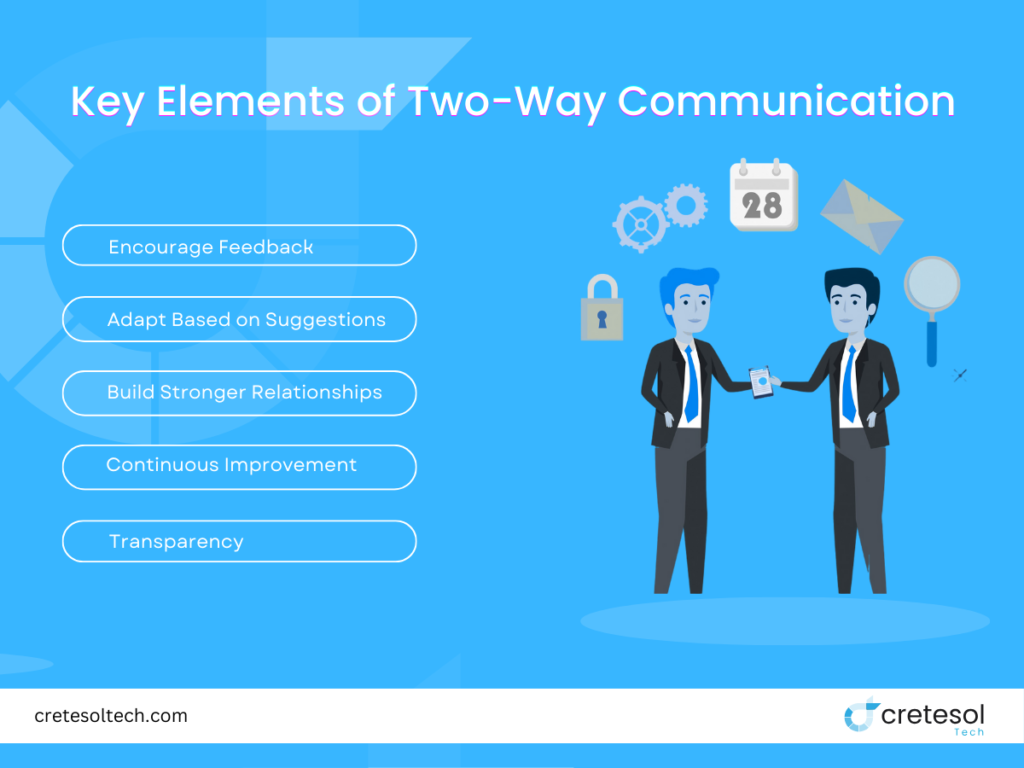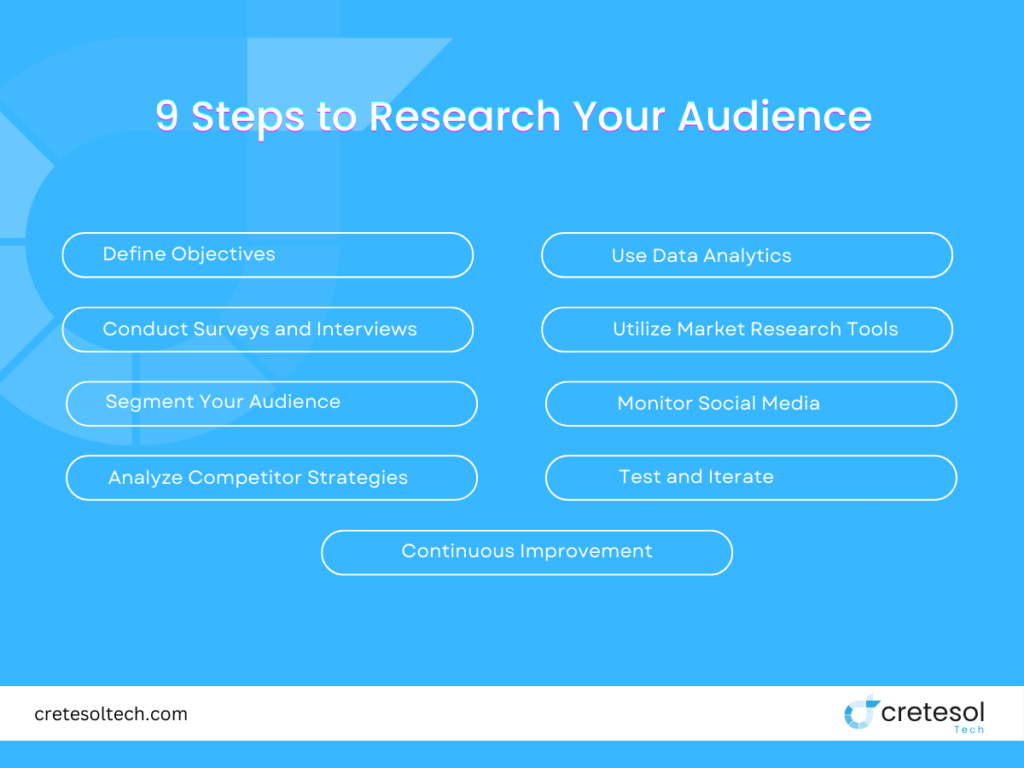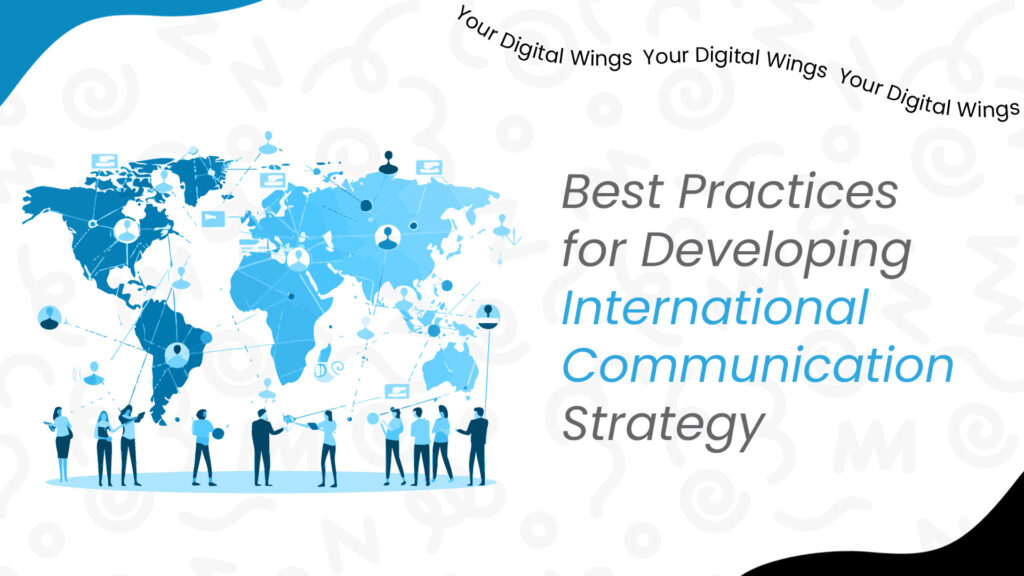In today’s interconnected world, many businesses struggle with reaching and resonating with diverse global audiences. Miscommunication and cultural misunderstandings can lead to missed opportunities and damaged relationships. However, mastering communication strategies for international markets bridges these cultural gaps builds trust, and ensures your marketing message resonates globally. By effectively connecting with people from different backgrounds, your digital marketing efforts can thrive, reaching customers in Europe, Asia, and beyond, and driving your business success worldwide.
1. Best Practices for Developing an International Communication Strategy for global growth
Many businesses face the challenge of expanding globally without distancing potential customers due to miscommunication. This struggle often stems from not having clear objectives and failing to understand cultural nuances. To overcome this, start by defining your goals, whether it’s brand awareness, lead generation, or customer retention.
Recognize that each market has unique cultural traits that affect how your message is perceived. Leveraging technology, such as translation tools and communication platforms, can streamline your efforts and maintain consistency. By addressing these pain points, you can craft effective Communication strategies for international markets that resonate with diverse global audiences and drive your business growth.
- Localize Your Content: Adapt your marketing materials to fit the cultural context and language of each target market. This includes translating text, using culturally relevant images, and considering local customs and preferences to ensure your message resonates.
- Invest in Cultural Training: Equip your team with cultural sensitivity training to help them understand and respect the diverse backgrounds of your international audience. This training can improve communication, prevent misunderstandings, and foster better relationships with global clients.
- Use Data-Driven Insights: Leverage analytics to understand the behavior and preferences of your international audience. Use this data to tailor your Communication strategies for international markets, ensuring they align with the needs and expectations of different markets. This approach can enhance engagement and drive better results.
2. Delivering the Right Message
Crafting the right message is essential for effective Communication strategies for international markets. Many businesses struggle with creating content that resonates with diverse audiences, leading to miscommunication and missed opportunities.
To overcome this, tailor your content to fit the cultural context and needs of your target audience. Ensure that your messages are clear, consistent, and aligned with your business goals. This alignment helps build a coherent brand image across different markets, ensuring your marketing efforts are both effective and impactful.
Key Points
- Understand Local Preferences: Research and incorporate local customs, values, and preferences into your messaging to make it more relatable and appealing. This ensures your content resonates with the specific cultural context of each target market.
- Consistency Across Channels: Maintain a consistent tone and style across all communication channels to reinforce your brand identity and message. Consistency helps in building trust and a strong, recognizable brand image globally.
- Feedback Loop: Regularly gather and analyze feedback from your international audience to refine and improve your messaging strategy. This continuous improvement process ensures your Communication strategies for international markets remain relevant and effective across different markets.
3. Managing Communication strategies for international markets
Many businesses struggle with managing international communication, leading to confusion and inefficiencies. This challenge often arises from unclear communication channels and a lack of feedback integration. To address this, establish clear channels using platforms like Slack, Microsoft Teams, or email to maintain regular communication.
Incorporate feedback from your international teams and clients to continuously improve your strategy. Additionally, training your employees on cultural sensitivity and communication skills can make a significant difference, ensuring smoother and more effective communication across your global operations.
- Centralize Communication: Use a unified platform for all Communication strategies for international markets to avoid fragmentation and ensure everyone is on the same page. Platforms like Slack or Microsoft Teams streamline interactions, making collaboration and information sharing easier and more efficient.
- Regular Updates: Schedule regular updates and meetings to keep all teams informed and aligned. Regular check-ins, through video calls or emails, maintain transparency and ensure everyone is aware of project progress, deadlines, and strategy changes.
- Feedback Mechanisms: Implement systems for collecting and acting on feedback from international teams to enhance your Communication strategies for international markets continuously. Formal feedback channels, like surveys or regular feedback, sessions, help identify improvement areas and make international teams feel valued and heard.
4. Embracing Cultural Differences
Cultural differences are not obstacles but opportunities. Many businesses fail to recognize this and miss out on connecting deeply with diverse audiences. By respecting and leveraging these differences, you can enhance your marketing strategies. Use cultural insights to create content that resonates with local audiences.
For example, a successful campaign in Japan might focus on harmony and group benefits, while one in the USA might emphasize individuality and innovation. Embracing these differences allows you to tailor your message, making it more impactful and relevant to each unique market.
Factors That Affect Communication in Embracing Cultural Differences
| Language | Language barriers can lead to misunderstandings. Using clear and culturally appropriate language helps ensure your message is understood correctly. |
| Non-Verbal Cues | Body language, gestures, and facial expressions can vary significantly between cultures. Understanding these differences can help avoid misinterpretations. |
| Context | High-context cultures (e.g., Japan, China) rely heavily on implicit communication and context, while low-context cultures (e.g., USA, Germany) prefer explicit and direct communication. Adapting your Communication strategies for the international market style to fit the context is crucial. |
| Values and Beliefs | Cultural values and beliefs influence how messages are perceived. For example, individualism versus collectivism can affect how people respond to marketing messages. |
Etiquette and Formality | Levels of formality and business etiquette differ across cultures. Being aware of these nuances can help build respect and rapport with your audience. |
| Time Orientation | Attitudes towards time can affect Communication strategies for international markets. Some cultures are punctual and time-conscious, while others are more flexible. Understanding these preferences can improve scheduling and interactions. |
| Communication Style | Some cultures prefer a more direct communication style, while others may use a more indirect approach. Adapting to these styles can enhance understanding and engagement. |
5. Regular Communication
A common pain point for businesses operating globally is the feeling of disconnection and lack of alignment among international teams and clients. This often leads to misunderstandings, decreased productivity, and a weakened brand presence. To address this, implement frequent and regular communication.
Use tools like newsletters, social media, and project management software to keep everyone engaged and informed. Regular updates foster trust, ensure consistency, and keep your brand top-of-mind, ultimately bridging the gap and enhancing collaboration across borders.
Benefits of Regular Communication:
- Engagement: Regular updates keep your international teams and clients actively involved and interested in your business activities and developments.
- Consistency: Using tools like newsletters, social media, and International media planning and buying, ensures that your message is consistently communicated across all platforms, reinforcing your brand identity.
- Trust: Frequent Communication strategies for international markets build trust by demonstrating transparency and reliability, making your audience feel valued and informed.
- Alignment: Regular updates help align your international teams with your business goals and strategies, ensuring everyone is working towards the same objectives.
- Top-of-Mind Awareness: Consistent Communication strategies for international markets keep your brand at the forefront of your audience’s mind, increasing the likelihood of repeat business and positive word-of-mouth.
6. Content is King
Many businesses struggle to capture and retain the attention of a global audience due to irrelevant or poorly crafted content. This often leads to low engagement and missed opportunities. To overcome this, focus on creating high-quality, relevant content that is both engaging and culturally appropriate.
Employ SEO strategies to ensure your content reaches a global audience, incorporating keywords that are popular in different regions to boost your visibility in search engine results. By prioritizing high-quality content, you can effectively engage your audience and drive your digital marketing success.
- Engagement: Craft content that captivates your audience’s interest. Use storytelling, visuals, and interactive elements to make your content more engaging.
- Cultural Relevance: Ensure your content respects and reflects the cultural context of your target markets. This includes using culturally relevant examples, language, and themes.
- SEO Strategies: Optimize your content for search engines to increase its visibility. Incorporate region-specific keywords, meta tags, and backlinks to enhance your search engine ranking.
- Quality: Focus on producing well-researched, informative, and valuable content. High-quality content establishes your brand as a trusted authority in your industry.
- Localization: Adapt your content to the local languages and preferences of your international audience. This includes translating text, localizing visuals, and considering local customs and trends.
7. Avoid Over-Diversification
Many businesses fall into the trap of spreading their efforts too thin by targeting too many markets at once. This often leads to diluted strategies and ineffective marketing efforts. To avoid over-diversification, focus on key markets where you have the highest potential for success.
Prioritize these markets and allocate your resources effectively to manage them well. By concentrating your efforts, you can develop deeper market insights, build stronger customer relationships, and achieve better results.
Key Strategies to Avoid Over-Diversification
- Identify Key Markets
- Resource Allocation
- Deep Market Insights
- Strong Customer Relationships
- Measure and Adjust
8. Two-Way Communication
Many businesses struggle with engaging their international clients effectively, leading to a disconnect and missed opportunities for improvement. To address this, ensure that Communication strategies for international markets are a two-way street. Encourage feedback from your global clients and be open to Adapting marketing messaging for international markets based on their suggestions. This practice builds stronger relationships and helps you refine your strategies to better meet their needs, ultimately enhancing customer satisfaction and loyalty.
Key Elements of Two-Way Communication

- Encourage Feedback: Actively seek input from your international clients through surveys, feedback forms, and direct conversations. Show that you value their opinions and are committed to listening.
- Adapt Based on Suggestions: Be flexible and willing to make changes based on the feedback you receive. This responsiveness demonstrates your dedication to meeting client needs and improving your services.
- Build Stronger Relationships: Two-way communication fosters trust and strengthens relationships with your clients. When clients feel heard and valued, they are more likely to remain loyal and advocate for your brand.
- Continuous Improvement: Use the insights gained from client feedback to continually refine and enhance your strategies. This ongoing process ensures that your business stays relevant and competitive in the global market.
- Transparency: Maintain transparency in your Communication strategies for international markets by sharing how client feedback is being used to make improvements. This openness builds credibility and trust with your international audience.
9. Offer Linguistic Choices
Many businesses struggle to connect with a global audience because their websites are only available in one language. This limitation can alienate potential customers who prefer to interact in their native language. To overcome this, offering linguistic choices on your website enhances user experience. Implement Multilingual marketing communications options to cater to different language speakers. This accessibility can significantly improve your reach and engagement with diverse audiences.
Key Benefits of Offering Linguistic Choices
- Enhanced User Experience: Providing content in multiple languages makes your website more user-friendly for non-native speakers, leading to higher satisfaction and longer visits.
- Broader Reach: Multilingual websites can attract a more diverse audience, expanding your market reach and potential customer base.
- Increased Engagement: Users are more likely to engage with your content and services when they can access information in their preferred language.
- Improved SEO: Localized content can boost your search engine rankings in different regions, making it easier for international users to find your website.
- Competitive Advantage: Offering multiple language options sets you apart from competitors who may not provide this level of accessibility, giving you an edge in attracting global customers.
10. Easy Contact
Many businesses face challenges in providing accessible and efficient communication channels for their international clients, leading to frustration and missed opportunities. To address this, make it easy for international clients to contact you. Simplify your contact methods and ensure you have local contact points and customer support. Providing multiple communication channels can enhance accessibility and customer satisfaction.
Key Strategies for Easy Contact
- Simplified Contact Methods: Ensure your contact information is easy to find on your website. Use clear and straightforward forms, and provide direct email addresses and phone numbers to streamline the communication process.
- Local Contact Points: Establish local contact points and customer support in key markets. Having local representatives who understand the cultural and language nuances can significantly improve customer interactions and satisfaction.
- Multiple Communication Channels: Offer various communication channels, such as email, phone, live chat, and social media, to cater to different preferences. This flexibility makes it easier for international clients to reach out in their preferred manner.
- 24/7 Support: Consider offering round-the-clock support to accommodate different time zones. This ensures that clients from any part of the world can get assistance when they need it.
- Clear Instructions: Provide clear instructions and guidelines on how to contact you for different types of inquiries. This helps clients navigate the process smoothly and ensures they reach the right department quickly.
11. Adapt to Buyer’s Language
Many businesses miss out on connecting deeply with their international customers because they don’t communicate in the customers’ preferred language. Speaking the buyer’s language can greatly influence their behavior and decision-making process. Use their preferred language in your marketing materials and communication to build rapport and trust. This adaptation shows respect and understanding of their needs, making your brand more relatable and trustworthy.
Steps to Adapt to Buyer’s Language
| Conduct Language Research | Identify the primary languages spoken by your target markets.Use data analytics and customer feedback to understand language preferences. |
| Hire Native Speakers | Employ native speakers or professional translators to ensure accuracy and cultural relevance in your communication.Consider hiring local customer support representatives who can communicate effectively with your audience. |
| Localize Marketing Materials | Translate your website, social media content, advertisements, and other marketing materials into the languages of your target markets.Ensure that translations are not just literal but also culturally appropriate and engaging. |
| Utilize Technology | Use translation tools and software to aid in the translation process.Implement multilingual chatbots on your website to provide instant support in multiple languages. |
| Cultural Sensitivity Training | Provide cultural sensitivity training for your team to help them understand and respect the cultural nuances of different markets.Educate your team on the importance of language adaptation in building customer relationships. |
| Test and Optimize | Continuously test your translated content to ensure it resonates with your audience.Gather feedback from native speakers and customers to make necessary adjustments and improvements. |
| Monitor Performance | Track the performance of your localized content using analytics tools.Measure engagement, conversion rates, and customer satisfaction to evaluate the effectiveness of your language adaptation efforts. |
| Continuous Improvement | Regularly update your content to keep it relevant and accurate.Stay informed about language trends and changes in your target markets to maintain effective Communication strategies for international markets. |
12. Research Your Audience
Understanding your target audience in each market is essential for effective international communication. Many businesses struggle to connect with their global audience because they lack deep insights into their preferences, behaviors, and needs. Thoroughly researching your audience can bridge this gap and significantly improve your Communication strategies for international markets. Use data analytics and market research tools to gather valuable insights, and tailor your communication efforts based on these findings to increase effectiveness.
9 Steps to Research Your Audience

- Define Your Objectives
- Use Data Analytics
- Conduct Surveys and Interviews
- Utilize Market Research Tools
- Segment Your Audience
- Monitor Social Media
- Analyze Competitor Strategies
- Test and Iterate
- Continuous Improvement
Conclusion
Mastering international communication in digital marketing requires a strategic approach that respects and leverages cultural differences. By adopting these best practices, you can create a strong, cohesive Communication strategy for international markets that resonates with global audiences and drives your digital marketing success. Embrace these strategies with cretesol tech to navigate the complexities of international markets and achieve your business goals.
Faqs
What is the communication strategy of international business?
A communication strategy in international business involves planning for effective communication across different countries and cultures. It includes understanding cultural differences, choosing appropriate communication channels, and ensuring clear and consistent messages globally.
What is an international marketing communication strategy?
An international marketing communication strategy outlines how a business will convey its marketing messages to global audiences. It involves adapting materials to cultural contexts, selecting the right channels, and aligning messages with brand goals.
What are the five international product and Communication strategies for international markets?
- Straight Extension: Same product and communication strategy in all markets.
- Product Adaptation: Modify the product, same communication.
- Communication Adaptation: Same product, adapt communication.
- Dual Adaptation: Adapt both product and communication.
- Product Invention: Develop new products for different markets.
What are the methods of international communication?
- Digital Communication: Email, social media, video conferencing, instant messaging.
- Traditional Communication: Phone calls, postal mail, face-to-face meetings.
- Multilingual Websites: Content in multiple languages.
- Translation Services: Professional translators, translation tools.
- Cultural Training: Educating employees on cultural difference.

 United Arab Emirates
United Arab Emirates